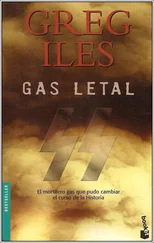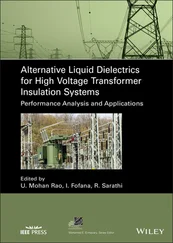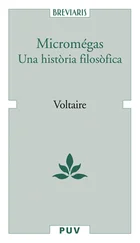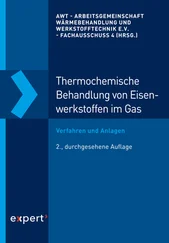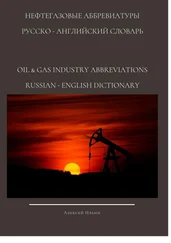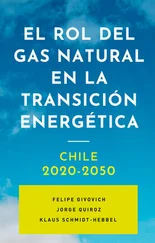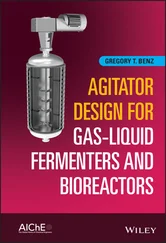Gas Insulated Substations
Здесь есть возможность читать онлайн «Gas Insulated Substations» — ознакомительный отрывок электронной книги совершенно бесплатно, а после прочтения отрывка купить полную версию. В некоторых случаях можно слушать аудио, скачать через торрент в формате fb2 и присутствует краткое содержание. Жанр: unrecognised, на английском языке. Описание произведения, (предисловие) а так же отзывы посетителей доступны на портале библиотеки ЛибКат.
- Название:Gas Insulated Substations
- Автор:
- Жанр:
- Год:неизвестен
- ISBN:нет данных
- Рейтинг книги:3 / 5. Голосов: 1
-
Избранное:Добавить в избранное
- Отзывы:
-
Ваша оценка:
- 60
- 1
- 2
- 3
- 4
- 5
Gas Insulated Substations: краткое содержание, описание и аннотация
Предлагаем к чтению аннотацию, описание, краткое содержание или предисловие (зависит от того, что написал сам автор книги «Gas Insulated Substations»). Если вы не нашли необходимую информацию о книге — напишите в комментариях, мы постараемся отыскать её.
Gas Insulated Substations (GIS)
Gas Insulated Substations — читать онлайн ознакомительный отрывок
Ниже представлен текст книги, разбитый по страницам. Система сохранения места последней прочитанной страницы, позволяет с удобством читать онлайн бесплатно книгу «Gas Insulated Substations», без необходимости каждый раз заново искать на чём Вы остановились. Поставьте закладку, и сможете в любой момент перейти на страницу, на которой закончили чтение.
Интервал:
Закладка:
Table of Contents
1 Cover
2 Title Page Gas‐Insulated Substations Second Edition Edited by Hermann J. Koch Electric Power Transmission, drkochconsulting, Germany
3 Copyright Page
4 Editor Biography
5 Contributors
6 Foreword of Editor
7 Foreword PES Substations Committee
8 Foreword GE Grid Solutions
9 Foreword Hitachi Energy
10 Foreword Siemens Energy
11 Acknowledgements
12 1 Introduction 1.1 General 1.2 Definitions 1.3 Standards and References 1.4 Ratings
13 2 Basic Information 2.1 History 2.2 Physics of Gas‐Insulated Switchgear 2.3 Reliability and Availability 2.4 Design 2.5 Safety 2.6 Grounding and Bonding 2.7 Factors for Choosing Gas‐Insulated Substations 2.8 Sulfur Hexafluoride (SF 6) 2.9 Alternative Gasses to SF 6 2.10 When to Use Gas‐Insulated Substations 2.11 Comparison High Voltage and Medium Voltage AIS, MTS and GIS
14 3 Technology 3.1 General 3.2 Modular Components, Design, and Development Process 3.3 Manufacturing 3.4 Specification Development 3.5 Instrument Transformers 3.6 Interfaces 3.7 Gas‐Insulated Surge Arresters 3.8 Gas‐Insulated Bus 3.9 Guidelines for GIS References
15 4 Control and Monitoring 4.1 General 4.2 GIS Monitoring 4.3 Local Control Cabinet 4.4 Digital Communication References
16 5 Testing 5.1 General 5.2 Type Tests 5.3 Routine Tests 5.4 Onsite Field Testing 5.5 Guidelines for Onsite Tests 5.6 Best Practice for On‐Site Field Testing Reference s
17 6 Installation 6.1 General 6.2 Installation 6.3 Energization: Connecting to the Power Grid Reference s
18 7 Operation and Maintenance 7.1 General 7.2 Operation of a Gas‐Insulated Substation 7.3 Maintenance 7.4 SF 6Gas Leakage Repair 7.5 Repair 7.6 Extensions 7.7 GIS Retrofit or Upgrade 7.8 Overloading and Thermal Limits 7.9 Maintenance and Operations Pointers 7.10 Lessons Learned References
19 8 Applications 8.1 General 8.2 Typical GIS Layouts 8.3 Reference Projects 8.4 GIS Case Studies 8.5 Mobile Substations 8.6 Mixed Technology Switchgear (MTS) 8.7 Future Developments 8.8 Underground Substations 8.9 Special Substation Buildings References
20 9 Advanced Technologies 9.1 General 9.2 Environment 9.3 Life Cycle Cost Analysis 9.4 Insulation Coordination Study 9.5 Very Fast Transients 9.6 Project Scope Development 9.7 Risk‐Based Asset Management of Gas‐Insulated Substations and Equipment 9.8 Health and Safety Impact 9.9 Electromagnetic Field 9.10 SF 6Decomposition Byproducts 9.11 Condition Assessment References Section 9.11 9.12 Gas‐Insulated Substations for Enhanced Resiliency References Section 9.12 9.13 Vacuum High Voltage Switching References Setion 9.13 9.14 Low Power Instrument Transformer References Section 9.14 9.15 Digital Twin of GIS and GIL References Section 9.15 9.16 Offshore GIS References Section 9.16 9.17 HVDC GIS References Section 9.17 9.18 Digital Substation References Section 9.18 References Sections 9.1 to 9.10
21 10 Conclusion
22 Index
23 End User License Agreement
List of Tables
1 Chapter 1 Table 1.1 Scope of subcommittees of the substations committee Table 1.2 Active members of the tutorial in update the table to be reflect m... Table 1.3 Past active members Table 1.4 Locations of GIS/GIL Tutorial Presented Table 1.5 Rated voltages of IEEE and IEC Table 1.6 Typical current ratings of GIS related to voltage classes Table 1.7 Typical short‐circuit current ratings of GIS related to voltage cl... Table 1.8 Typical factors to calculate rated peak withstand currents ( I p) Table 1.9 Rated duration of short circuit ( t K) Table 1.10 Rated supply voltages
2 Chapter 2 Table 2.1 Main features of GIS Table 2.2 History steps of development of GIS Table 2.3 Major failure frequency (FF) – second GIS survey total population ... Table 2.4 Voltage classes used in CIGRE survey [37, 38] Table 2.5 Identification of main component involved in the failure from a GI... Table 2.6 Identification of main component involved in the failure from a GI... Table 2.7 Number of GIS population (CB bays) per survey year [27, 28, 47] Table 2.8 Comparison of collected GIS service experiences of 1994 and 2012 s... Table 2.9 Results of the reliability study [37, 38] Table 2.10 Features of SF 6for high‐voltage equipment Table 2.11 Maximum acceptable impurity levels for new gas are given in (IEC ... Table 2.12 Maximum acceptable impurity levels for technical grade SF 6(IEC 6... Table 2.13 Maximum acceptable impurity levels for reuse of SF 6with a low ra... Table 2.14 General measures when working with SF 6switchgear [51, 52] Table 2.15 Safety at work when accessing/entering gas compartments in elect... Table 2.16 Methods for storage of SF 6[51, 52] Table 2.17 Containers for transportation [51, 52] Table 2.18 Stored SF 6in GIS [51, 52] Table 2.19 Man‐made greenhouse emissions in 1999 [51, 52] Table 2.20 Maximum acceptable impurity levels for technical grade SF 6(IEC ... Table 2.21 Goals for the SF 6‐handling process Table 2.22 Three cases of SF 6handling [51, 52] Table 2.23 Steps of SF 6reuse program involving an SF 6producer [51, 52] Table 2.24 Normal case of SF 6handling [51, 52] Table 2.25 Gas handling at a GIS circuit breaker gas compartment [51, 52] Table 2.26 Technical data for on‐site SF 6measuring devices [51, 52] Table 2.27 Kyoto Protocol requirements [51, 52] Table 2.28 Main requirements for use and handling SF 6[51, 52] Table 2.29 Phase out dates for high‐voltage equipment containing SF 6in Cali...
3 Chapter 3Table 3.1 Service conditions and ratings (use the template to specify value...Table 3.2 Limits of supply referring to Figure 3.57 (Simplified from table ...Table 3.3 Typical standard dimensions in millimeters (simplified from table...Table 3.4 Typical moment and forces applied on the bushing flange and trans...Table 3.5 Recommended creepage distance values [12, 13]
4 Chapter 4Table 4.1 IEC 61850 series on communication networks and systems for power ...Table 4.2 Categories of functionsTable 4.3 Information of function descriptionTable 4.4 Overview of standards related to digital communication
5 Chapter 6Table 6.1 Approximations of US and international dimensions and torques (Re...Table 6.2 Test levels (Reproduced by permission of Tech S Corp)
6 Chapter 7Table 7.1 Dielectric required sizeTable 7.2 Typical current ratings
7 Chapter 8Table 8.1 Technical data of the 500 kV/115 kV GIS/AIS substationTable 8.2 Technical data of the 115 kV GIS switching stationTable 8.3 Technical data of the 345 kV indoor GISTable 8.4 Technical data of the 69 kV indoor GISTable 8.5 Technical data of the 115 kV container GISTable 8.6 Technical data of the 115 kV outdoor GISTable 8.7 Technical data of the 345 kV indoor GISTable 8.8 Technical data of the 115 kV indoor GISTable 8.9 Technical data of the 69 kV indoor GISTable 8.10 Technical data of the 138 kV outdoor ring bus GISTable 8.11 Technical data of the 500 kV indoor GISTable 8.12 Technical data of the 69 kV outdoor GISTable 8.13 Technical data of the 69 kV underground GISTable 8.14 Technical data of the 69 kV indoor GIS under severe environmentTable 8.15 Technical data of the Bergen switching stationTable 8.16 Technical data of a mobile three‐phase insulated 72.5 kV GIS mou...Table 8.17 Technical data of a mobile 420 kV GISTable 8.18 Typical ratings for the Rogowski coilTable 8.19 Typical ratings for the 550 kV GISTable 8.20 Cost impact of conventional substation versus underground substa...
8 Chapter 9Table 9.1 Recycling process for GIS/GIL materialsTable 9.2 Factors influencing TEV magnitude in a GISTable 9.3 Rating the level of risk for the four most important risk areasTable 9.4 Rating the probability of occurrence in the classified risk areasTable 9.5 Rating the impact of the classified risk areasTable 9.6 Calculating the qualitative value of the riskTable 9.7 Some of the controls used to minimize the occurrence and impact o...Table 9.8 List of relevant SF 6decomposition byproducts. TLV (Threshold Lim...Table 9.9 Tropical Cyclone characteristics, vulnerability, and threatTable 9.10 Terrorist Physical Attack characteristics, vulnerability, and th...Table 9.11 Terrorist Physical Attack characteristics, vulnerability, and th...Table 9.12 Power frequency withstand voltage (AC) and Lightning impulse vol...Table 9.13 Arcing times of vacuum interrupter (VI) unitsTable 9.14 Voltage distribution at time t after the current zero (
Читать дальшеИнтервал:
Закладка:
Похожие книги на «Gas Insulated Substations»
Представляем Вашему вниманию похожие книги на «Gas Insulated Substations» списком для выбора. Мы отобрали схожую по названию и смыслу литературу в надежде предоставить читателям больше вариантов отыскать новые, интересные, ещё непрочитанные произведения.
Обсуждение, отзывы о книге «Gas Insulated Substations» и просто собственные мнения читателей. Оставьте ваши комментарии, напишите, что Вы думаете о произведении, его смысле или главных героях. Укажите что конкретно понравилось, а что нет, и почему Вы так считаете.

